The best Samyang lenses: budget prime lenses from Rokinon & Samyang
Samyang and Rokinon lenses are really affordable alternatives to own-brand lenses. We pick the best Samyang lenses today
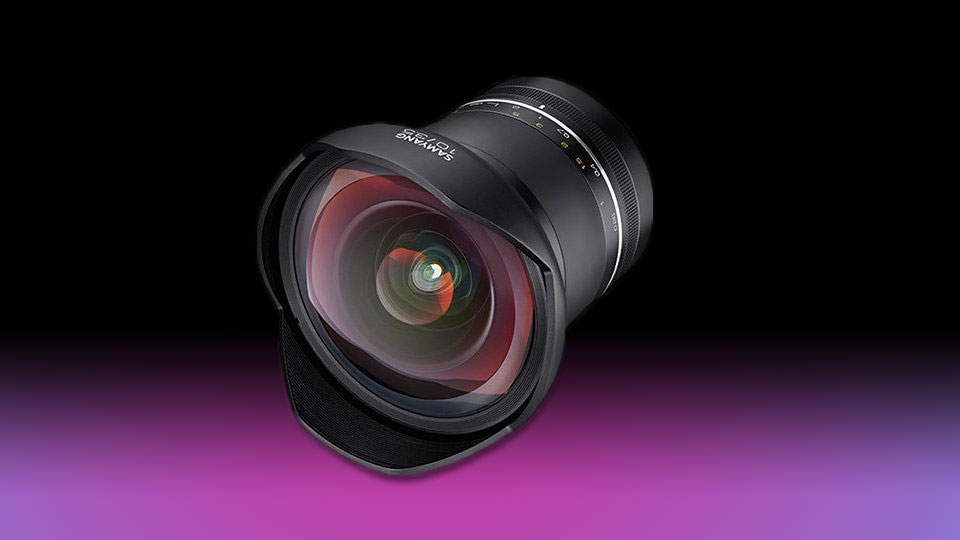
Why buy the best Samyang lenses (also called Rokinon lenses in the US)? The selling point for these third-party optics, available for all contemporary camera systems, is that they're a good deal affordable than most other lenses, especially the manufacturers' own. Samyang also makes lenses on focal lengths that other manufacturers don't, giving them a real USP in a crowded field.
A South Korean lens manufacturer, Samyang is perhaps best known for its affordable manual-focus primes in a huge variety of mount options. However, the firm has expanded its range considerably, and also makes autofocus lenses that can compete with the big boys by virtue of coming with a significantly lower price tag.
Manual focus lenses
Why you can trust Digital Camera World
Manual focus isn't for everyone, but if you have the patience (and work more with subjects that sit still, like mountains and buildings) they can be highly rewarding and good fun to use. Many of Samyang's manual-focus primes have had no electronics at all, thus requiring the aperture to be set manually via the control ring. While this does limit the modes you can use, and cause a dark viewfinder image at narrow apertures, it can be an enjoyably tactile experience that feels like "pure" photography.
This isn't the case with all Samyang lenses though; its Nikon F-mount primes, for instance, come with electronics that enable the full range of PASM shooting modes. Chips have also started to appear in Canon EF and other manual-focus Samyang primes. Generally, it's worth checking each individual model for which functions it has and doesn't have, as they're all different.
• We don't list every single Samyang lens in this guide, just those we've tested that are especially interesting to photographers
• Some Samyang lenses come in just one mount, some are available in a couple of mounts, and some are made in every mount under the sun!
• We list all the available mounts in the specs for each lens, but we can't list all the deals – so check you buy the right mount for your camera.
As mentioned, Samyang produces lenses for a huge range of mount systems, including Canon EF-S, EF, RF and M, Nikon F and Z, Fujifilm X, Micro Four Thirds, Pentax K, Sony A and E, and even Samsung NX if you've still got one of those kicking about. The full range of mount options is available for many of the full-frame compatible lenses, even where the camera system only features crop-sensor bodies.
As well as wide-angle, standard and telephoto manual-focus lenses, specialist optics in the range include macro and tilt/shift lenses. Samyang also makes cine lenses but, for now, let’s take a closer look at some of the most popular lenses in the autofocus, premium manual, crop-sensor manual and full-frame manual lines.
Samyang XP lenses: Samyang also offers a range of ‘Premium Manual Focus’ optics for DSLRs, all of which are full-frame compatible and available in Canon EF-mount. Bearing the ‘XP’ (XPert) name, they currently range from the XP 10mm f/3.5 to the XP 85mm f/1.2. The 14mm lens is also available in Nikon F-mount.
Samyang AF lenses: More recently, Samyang has brought autofocus prime lenses to the market. Most of these are designed for Sony mirrorless cameras, in full-frame FE-mount. There are currently nine in total, ranging from the AF 14mm f/2.8 FE to the AF 85mm f/1.4 FE, both of which are also available in Canon RF-mount editions. Samyang has additionally created 14mm and 85mm autofocus lenses in Canon EF and Nikon F mount options, but with a different design to the mirrorless lenses.
We've divided this guide up into the different types of Samyang lenses, starting with AF lenses, then focusing on the premium manual primes. We then look more broadly at the manual-focus lens; first the APS-C optics, then the full-frame ones. You can click the headings on the left to jump to a section of your choice, and bear in mind that we've listed the available mounts on every product.
Samyang AF lenses
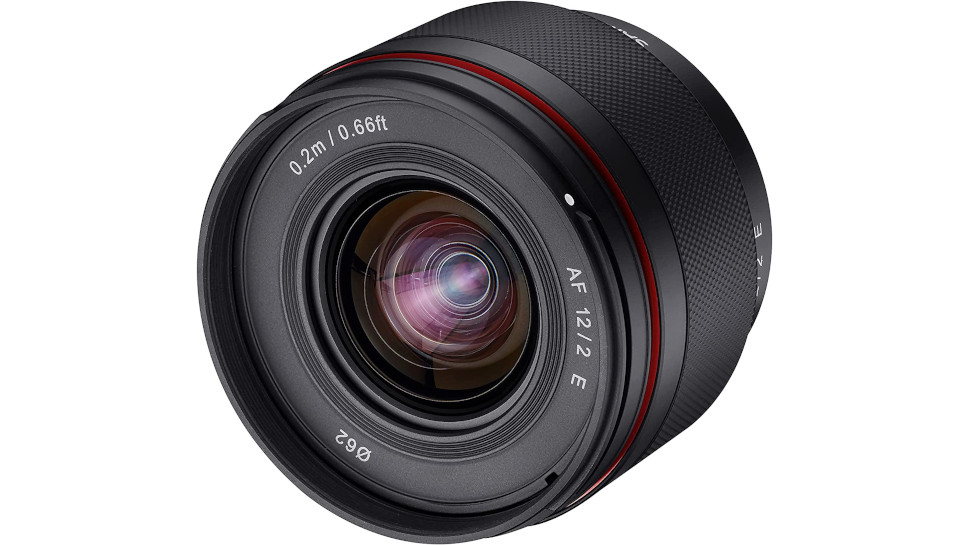
Specifications
Reasons to buy
Reasons to avoid
Given that Sony's A6000 APS-C cameras are built for speed, it makes sense to get a lens that can keep up with them. Step forward, Samyang's AF 12mm F2.0 E, a highly capable Sony E-mount lens with super-snappy autofocus, and enough image quality to make the most of those APS-C sensors. The previous 12mm f/2 from Samyang was manual-focus only, which doesn't really suit the vibe of the A6000 series, so it's good to see this new optic correcting that issue.
Images from the Samyang AF 12mm F2.0 E look fantastic, with excellent sharpness even when shooting wide open. You might notice some lateral chromatic aberration throughout the aperture range, but this can be easily corrected in-camera; same goes for the minor vignetting and fringing that can crop up occasionally. This lens really punches above its weight for an optic at this price, and is a tremendous addition to the kit-bag of any Sony APS-C user.
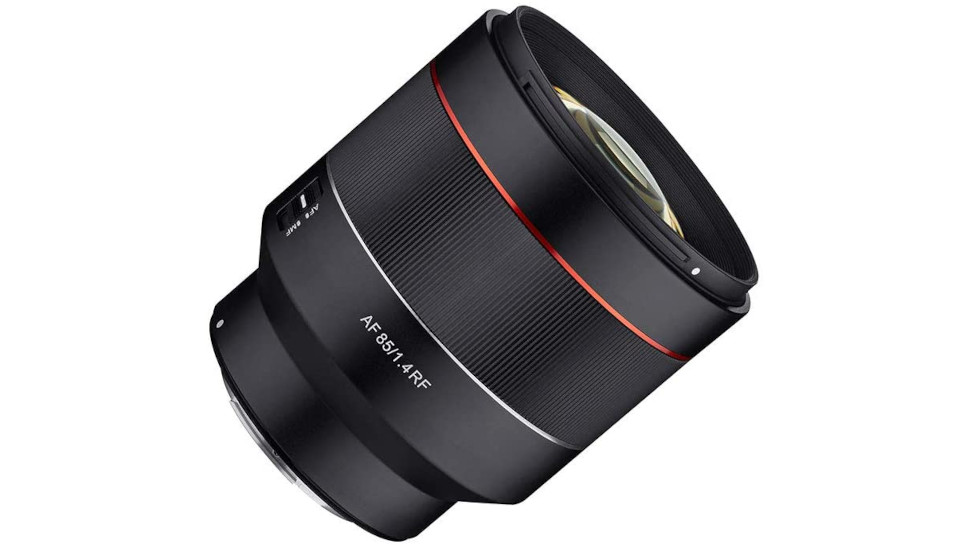
Specifications
Reasons to buy
Reasons to avoid
While Canon's RF system is where some of the most exciting photographic developments are happening right now, it does all come at a wee bit of a wallet-lightening premium. So it makes sense that third-party manufacturers would start offering cheaper alternatives, one of the finest of which is Samyang's AF 85mm f/1.4 RF, a short-telephoto portrait lens with autofocus and high enough quality to make the most of the EOS R sensors. Is it as good as the Canon RF 85mm f/1.2 flagship lens? Nope! But it's also a quarter of the price, so, there's that to consider.
The bottom line is that this is an excellent portrait lens. Images are sharp across the board, the autofocus is snappy (quiet rather than silent, which is worth bearing in mind if you're shooting video), and the chassis is durably built with weather sealing. This should be a highly compelling proposition for any RF portrait shooter, as the value for money it provides is pretty much unbeaten in the range right now.
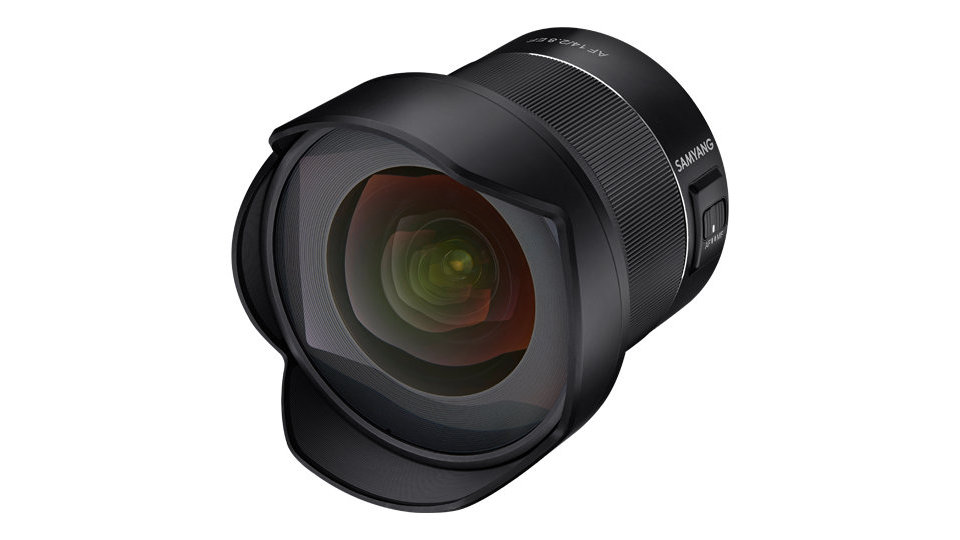
Specifications
Reasons to buy
Reasons to avoid
Whereas Samyang makes a wide range of autofocus primes for Sony FE mount, this is currently one of only two autofocus lenses for Canon and Nikon DSLRs. The other is the AF 85mm f/1.4. There are also AF 14mm f/2.8 lenses for Canon R-series and Sony mirrorless cameras, but those have a different design. As you’d expect from an autofocus lens, it has all of the requisite electronics for controlling the aperture from the camera body. Typical of Samyang lenses, build quality is good and this one features weather-seals in its robust construction. The Nikon version is a little shorter and lighter than the Canon edition. As with most ultra-wide lenses, the hood is integral so there’s no filter attachment thread. Autofocus is fast and near-silent, and image quality is very good, with excellent sharpness across most of the frame, especially between f/4 and f/11. Overall, it’s a highly attractive, fast ultra-wide prime and very good value at the price.
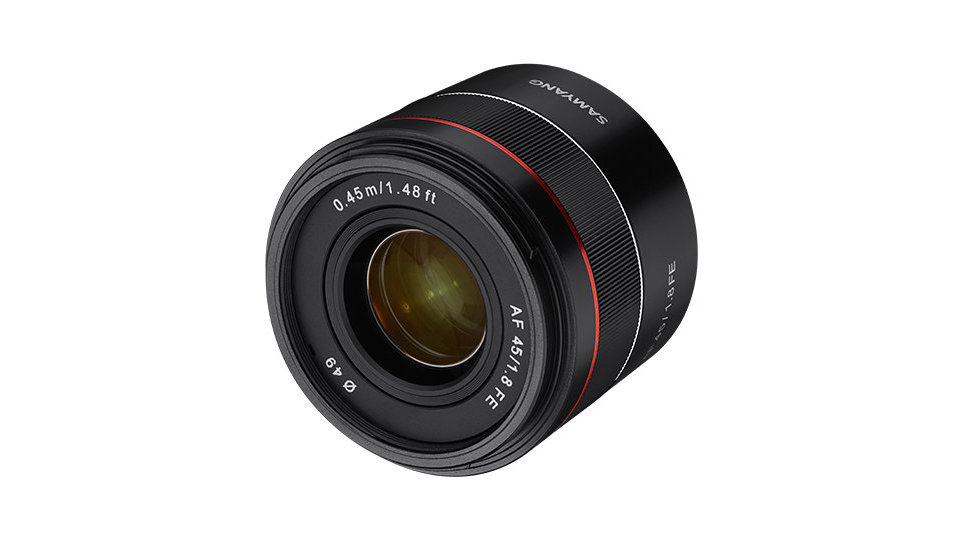
4. Samyang AF 45mm f/1.8 FE
Specifications
Reasons to buy
Reasons to avoid
Samyang makes a 50mm f/1.4 autofocus lens for Sony FE-mount cameras but it’s quite chunky, about four inches long and weighs nearly 600g. The 45mm f/1.8 lens is little more than half the length and only about a quarter of the weight, making it well-matched to slimline Sony mirrorless cameras. It gives a very natural viewing perspective on full-frame bodies and a portrait-friendly 67.5mm effective focal length on APS-C cameras. Autofocus is quick and quiet and the lens produces impressive centre-sharpness even wide-open at f/1.8, corner-sharpness becoming good at f/2.8 and narrower apertures. Build quality is good despite the lightweight construction, but there are no weather-seals.
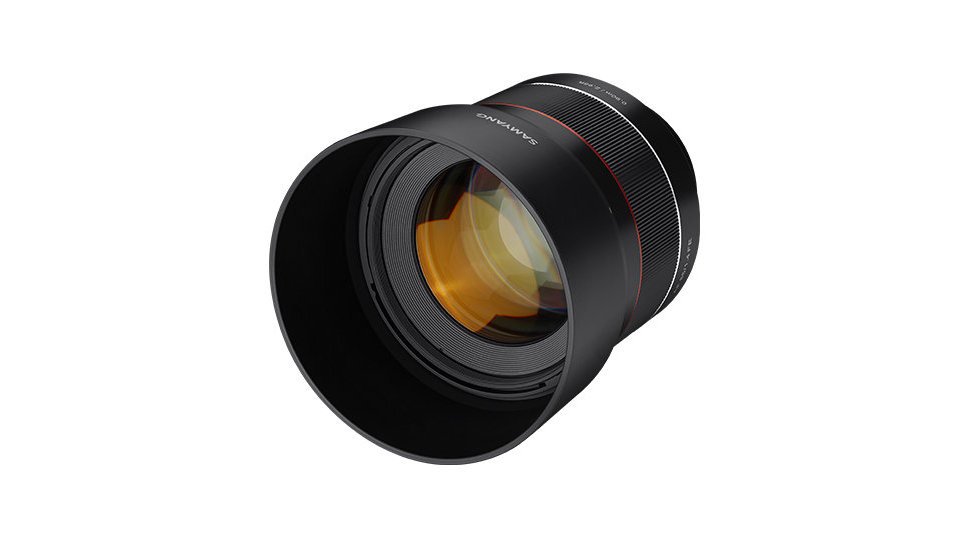
Specifications
Reasons to buy
Reasons to avoid
We recently reviewed the compact and lightweight Samyang AF 75mm f/1.8 FE, which is the logical step up in focal length from the 45mm f/1.8 listed above. The 85mm f/1.4 has a more classic telephoto length and aperture combination for portraiture on full-frame cameras. It’s available for Sony FE and Canon RF mount mirrorless cameras, and Samyang also makes a different design of 85mm f/1.4 autofocus lens for Canon and Nikon DSLRs. Relatively compact and lightweight for this class of lens, the FE-mount edition is very straightforward with no onboard controls apart from the focus ring. This is electronically coupled to the quick and virtually silent stepping motor autofocus system. The quality of both sharpness and bokeh is excellent, helped by the inclusion of four HR (High Refractive index) elements and one ED (Extra-low Dispersion) element in the optical path.
Premium Samyang MF lenses
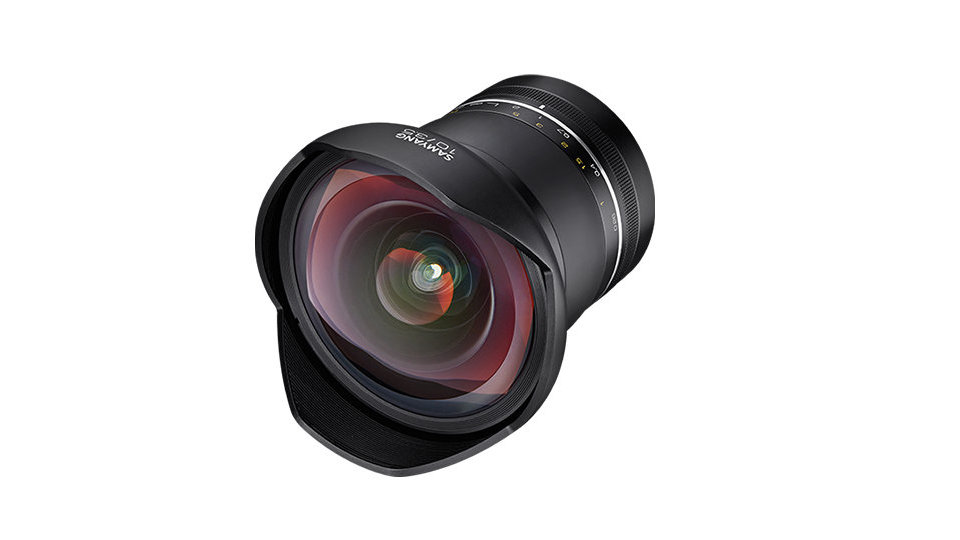
Specifications
Reasons to buy
Reasons to avoid
Samyang’s XP 10mm lens is amazingly wide-angle, giving a 130-degree viewing angle on a full-frame camera. That beats pretty much every other rectilinear (non-fisheye) lens on the market and, what’s more, the Samyang achieves this with barely any barrel distortion. It’s beautifully built with a metal barrel and mounting plate, and a particularly tactile rubberised focus ring. Samyang’s XP (XPert) lenses are designed to make the most of 50 megapixel stills and 8K video shooting. As such, sharpness is excellent. Unlike most of Samyang’s mainstream manual-focus lenses, the XP range includes the necessary electronics for setting the aperture from the camera body, so you can shoot in the full range of PASM modes. The focus distance scale is useful but, as with other XP lenses, there are no depth of field markers.
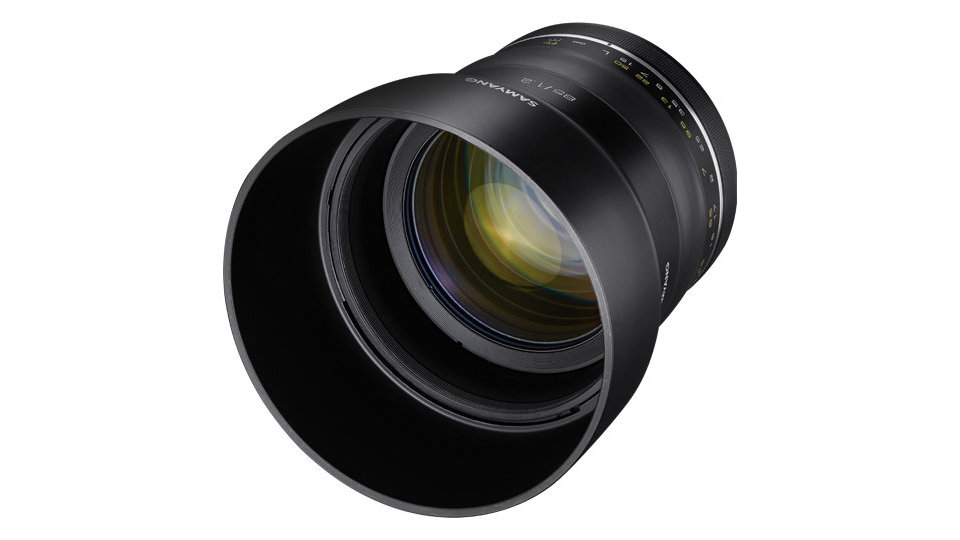
7. Samyang XP 85mm f/1.2
Specifications
Reasons to buy
Reasons to avoid
Whereas the XP 14mm f/2.4 lens is available in both Canon EF and Nikon F mount options, the rest of the range is currently only available for Canon, including 10mm, 35mm, 50mm and 85mm primes. Of these, the 35mm, 50mm and 85mm all have a super-fast f/1.2 aperture rating. The 85mm is particularly suitable for head-and-shoulders portraiture and is capable of a really tight depth of field, combining very good sharpness with super-smooth bokeh. As with other lenses in the XP range, build quality is of a very high standard, although no weather-seals are featured. Also sold as the Rokinon SP 85mm f/1.2.
Samyang MF APS-C lenses
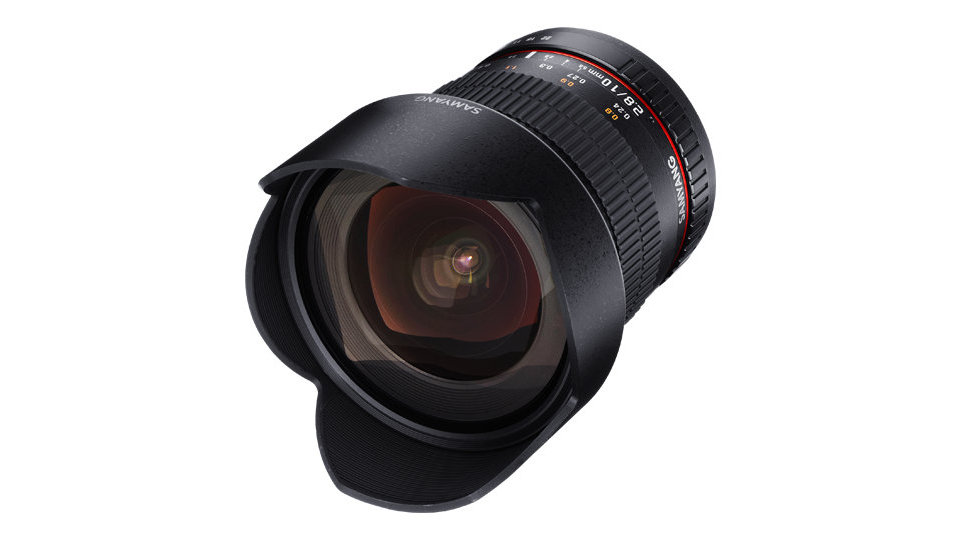
Specifications
Reasons to buy
Reasons to avoid
Samyang makes three fish-eye (curvilinear) lenses for crop-sensor cameras but this is the widest rectilinear lens. It’s available in a huge array of mount options but only the F-mount version for Nikon DSLRs includes electronics, enabling full use of PASM shooting modes and the illumination of focus assist/confirmation lamps in the viewfinder. That said, a focus peaking option is usually available with mirrorless cameras, catered for by some of the other mount options. The string of letters in the lens’s title signify that it has both ED (Extra-low Dispersion) and AS (Aspherical) elements, along with NCS (Nano Coating System), and is designed for CS (Crop Sensor) cameras. The smooth-action focus ring has a focus distance scale which works well with the depth of field markers for zone focusing or setting the hyperfocal distance.
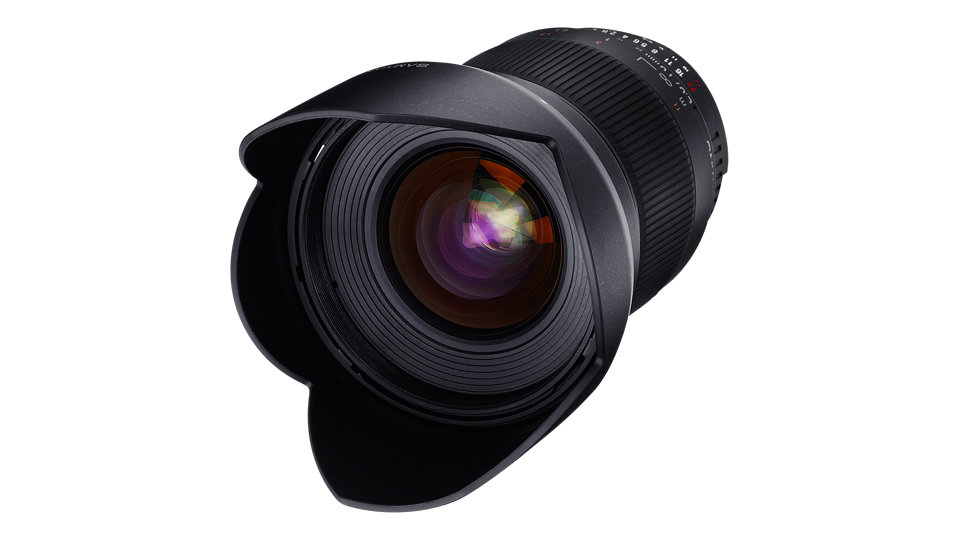
9. Samyang 16mm f/2.0 ED AS UMC CS
Specifications
Reasons to buy
Reasons to avoid
The next step up in focal length from the Samyang 10mm lens listed above, this 16mm optic is available in a similarly diverse range of mount options, for both DLSRs and mirrorless cameras. It has a fast f/2.0 aperture rating and gives a popular 24mm ‘effective’ focal length with APS-C format cameras (25.6mm for Canon). On a Micro Four Thirds body, it has a 32mm effective focal length, more similar to using a 35mm lens on a full-frame camera. Like the 10mm lens, only the Nikon-fit edition has built-in electronics. One major difference is that the 16mm has a bayonet-fit lens hood rather than an integral hood, enabling the inclusion of a 77mm filter attachment thread.
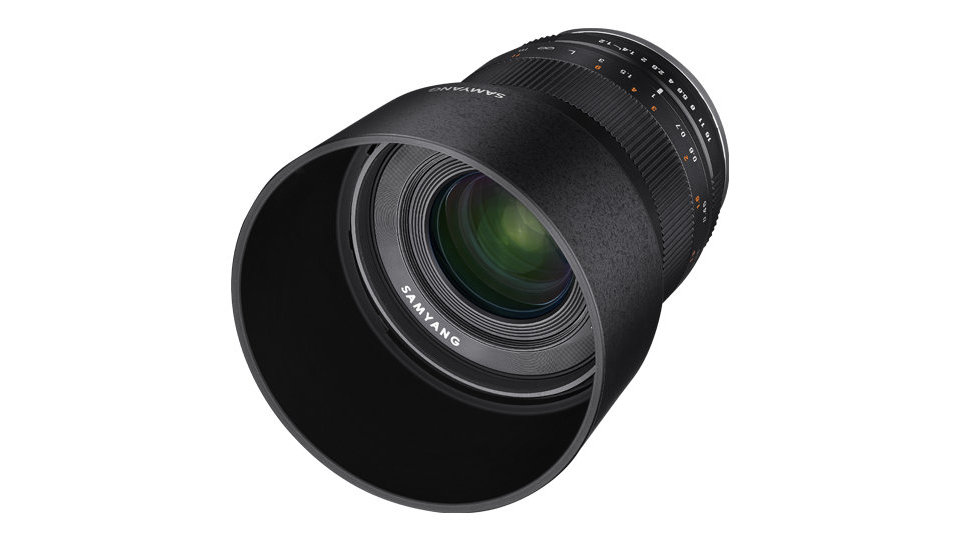
Specifications
Reasons to buy
Reasons to avoid
Designed exclusively for mirrorless crop-sensor cameras, this lens is available in Canon M, Fujifilm X, Sony E and Micro Four Thirds mount options. Other ‘CS’ lenses that cater to the same range of cameras include the 50mm f/1.2, 85mm f/1.8 and 300mm f/6.3. They’re all competitively priced, although the 35mm is the most expensive to buy. It gives a standard viewing angle on APS-C format cameras, equivalent to 52.5mm in full-frame terms (56mm for Canon), whereas it works as a short telephoto on Micro Four Thirds bodies, with an 70mm effective focal length. The typically long rotational travel of the focus ring enables very precise adjustments, and the ring itself operates with smooth precision. Image quality is very good in all respects.
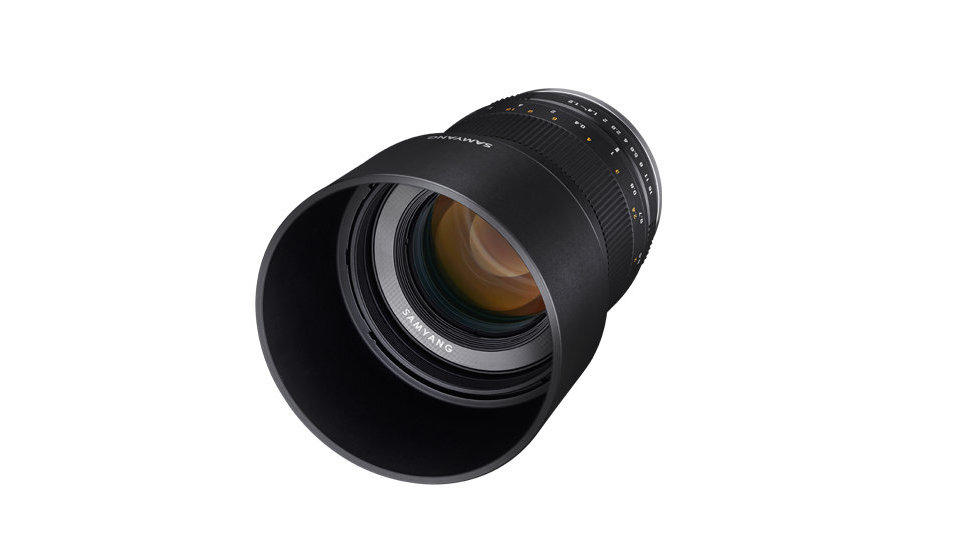
11. Samyang 50mm f/1.2 AS UMC CS
Specifications
Reasons to buy
Reasons to avoid
About the same size as its 35mm f/1.2 sibling listed above and with the same range of mount options, this lens is a little lighter in weight. Build quality is similarly impressive, although again with the absence of any weather-seals. The 50mm lens gives an effective 75mm focal length on Fujifilm and Sony cameras, 80mm on Canon EOS M bodies and 100mm for Micro Four Thirds. Again, the optical design includes aspherical elements and UMC (Ultra Multi Coating) but this time there are no ED (Extra-low Dispersion) elements. Sharpness could be better when shooting wide-open at f/1.2 but overall image quality is very pleasing, and bokeh is nice and smooth. Shooting at narrow apertures isn’t such an issue as with a DSLR, because mirrorless cameras for which this lens is designed can automatically boost the brightness of an electronic viewfinder image.
Samyang MF full frame lenses
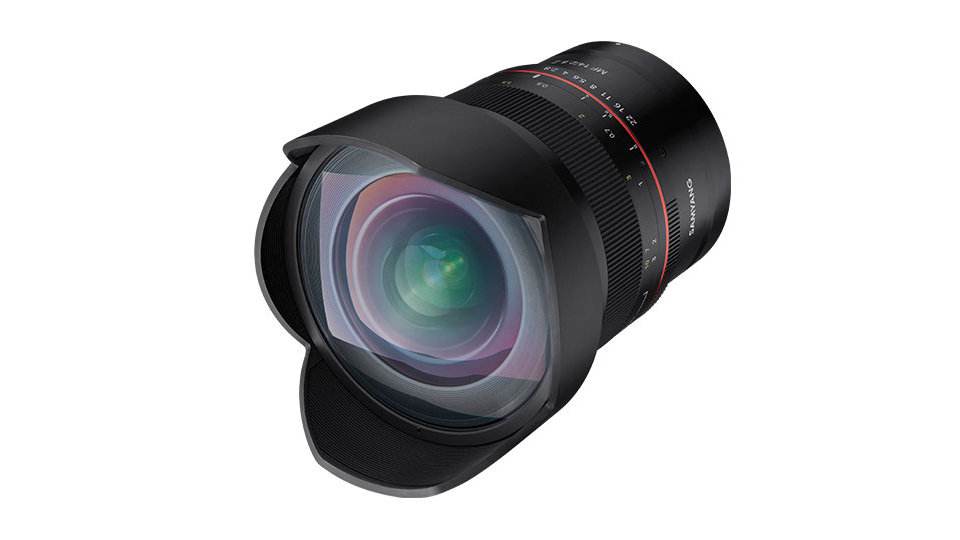
Specifications
Reasons to buy
Reasons to avoid
This ultra-wide-angle prime is a relatively new design for Canon R and Nikon Z series cameras. A fully manual lens, it’s not only manual-focus but also contains no electronics. Aperture adjustments therefore have to be made using the control ring on the lens, rather than from the camera body, and no lens-based EXIF data is recorded with images. On the plus side, its use with mirrorless bodies avoids darkening of the viewfinder image at progressively narrower apertures. Handling is refined with silky-smooth movement of the manual focus ring. Image quality is nice and sharp with negligible color fringing, although barrel distortion can be noticeable.
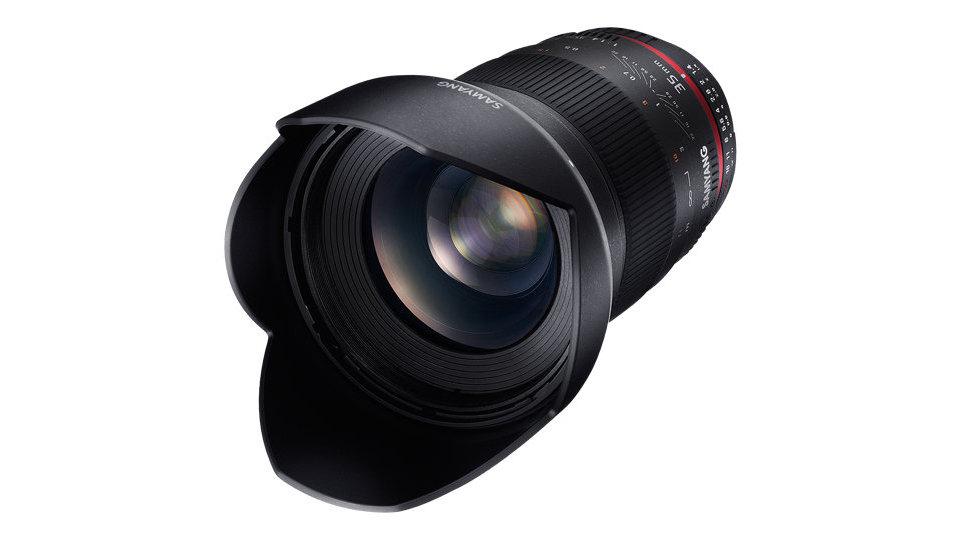
Specifications
Reasons to buy
Reasons to avoid
Like most of Samyang’s older manual-focus lenses, this one is available in a huge range of mount options, to suit most makes of full-frame and crop-sensor cameras. Naturally, it gives a modest wide-angle perspective on the former, and a more standard viewing angle on the latter. Most versions of the lens are fully manual but the Canon EF and Nikon F mount editions are ‘chipped’ with an internal microprocessor, enabling electronic communication with the camera body. This allows for unrestricted use of all PASM shooting modes. Image quality is generally impressive although sharpness is a little uninspiring at apertures wider than f/2.8.
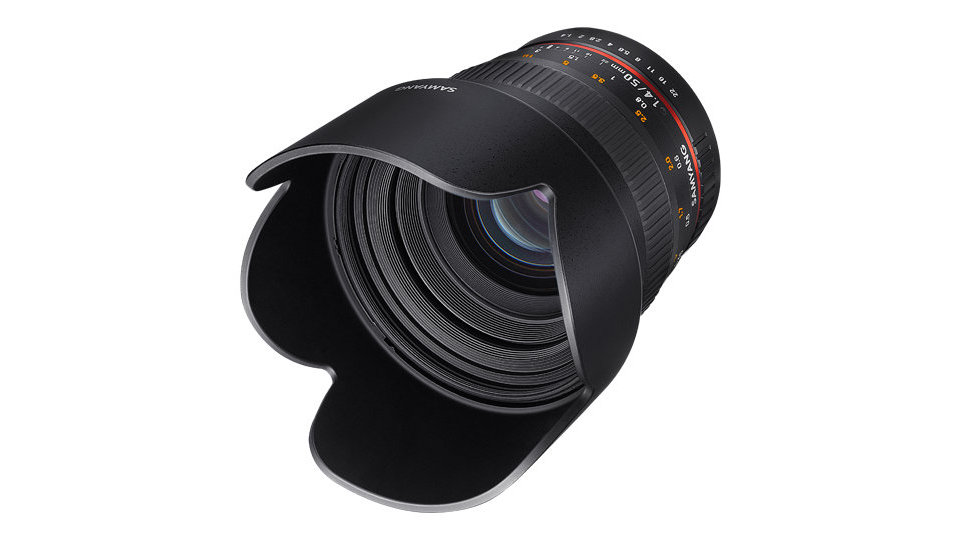
14. Samyang 50mm f/1.4 AS UMC
Specifications
Reasons to buy
Reasons to avoid
Like its 35mm stablemate, this 50mm lens is available in the same large array of mount options. This time, however, none of them have any built-in electronics to enable the full range of PASM shooting modes. Instead, you’re limited to metered manual and aperture-priority shooting utilising the on-lens aperture ring, and the viewfinder image of DSLRs becomes progressively darker at narrower aperture settings. It’s physically a little shorter than the 35mm lens and, similarly, the size and weight vary with different mount options. The lens has very good handling and image quality when used on full-frame bodies as a standard prime, and is also a good choice for portraiture on crop-sensor bodies, where the effective focal length ranges from 75mm to 100mm for APS-C and Micro Four Thirds cameras respectively.
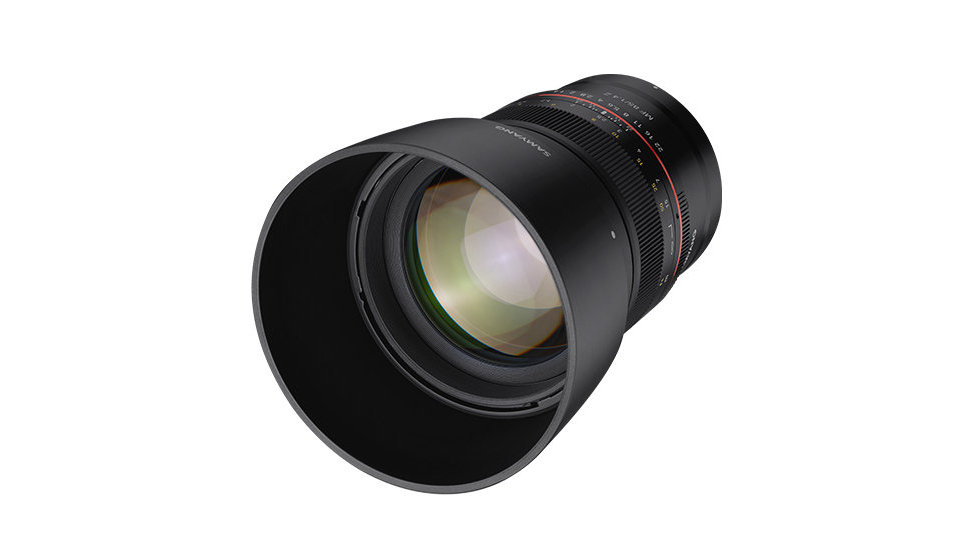
Specifications
Reasons to buy
Reasons to avoid
This fully manual lens is designed for the latest, high-tech Canon and Nikon mirrorless full-frame cameras. As well as being manual-focus, you can’t set the aperture from the camera body, so have to use the control ring on the lens itself. As with other manual lenses, the availability of a focus peaking display in the electronic viewfinders and rear screens of mirrorless cameras helps with accurate manual focusing, which can be critical considering that the depth of field can be tiny at 85mm with an aperture of f/1.4. IBIS (In Body Image Stabilization) is available in Nikon Z 6 and Z 7 cameras, if you enter the Non-CPU lens data in the Setup menu. It’s a fun lens to use, great value at the price, and delivers impressive image quality with beautiful bokeh.
How we test lenses
We test lenses using both real world sample images and lab tests. Our lab tests are carried out scientifically in controlled conditions using the Imatest testing suite, which consists of custom charts and analysis software that measures resolution in line widths/picture height, a measurement widely used in lens and camera testing. We find the combination of lab and real-word testing works best, as each reveals different qualities and characteristics.
Read more:
• The best wide-angle lenses right now
• Which are the best camera lenses to get?
• What is a prime lens?
Get the Digital Camera World Newsletter
The best camera deals, reviews, product advice, and unmissable photography news, direct to your inbox!
Matthew Richards is a photographer and journalist who has spent years using and reviewing all manner of photo gear. He is Digital Camera World's principal lens reviewer – and has tested more primes and zooms than most people have had hot dinners!
His expertise with equipment doesn’t end there, though. He is also an encyclopedia when it comes to all manner of cameras, camera holsters and bags, flashguns, tripods and heads, printers, papers and inks, and just about anything imaging-related.
In an earlier life he was a broadcast engineer at the BBC, as well as a former editor of PC Guide.

